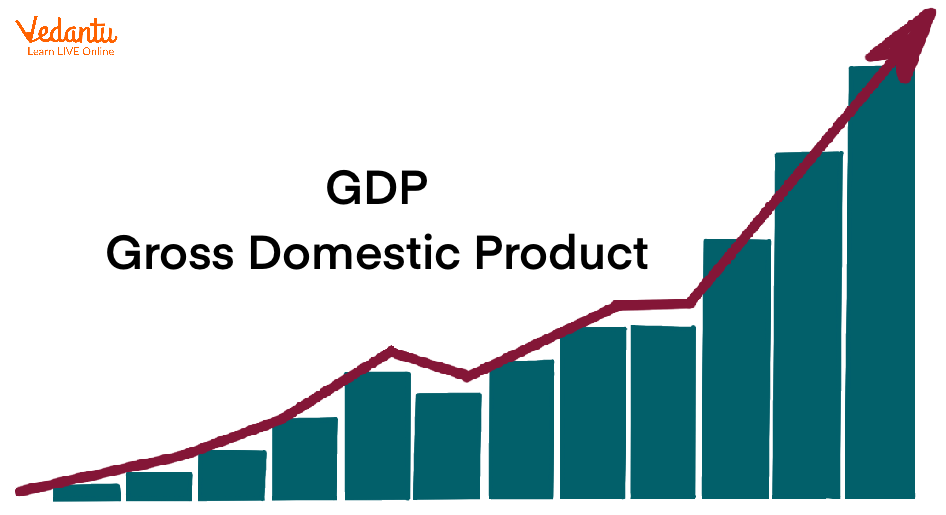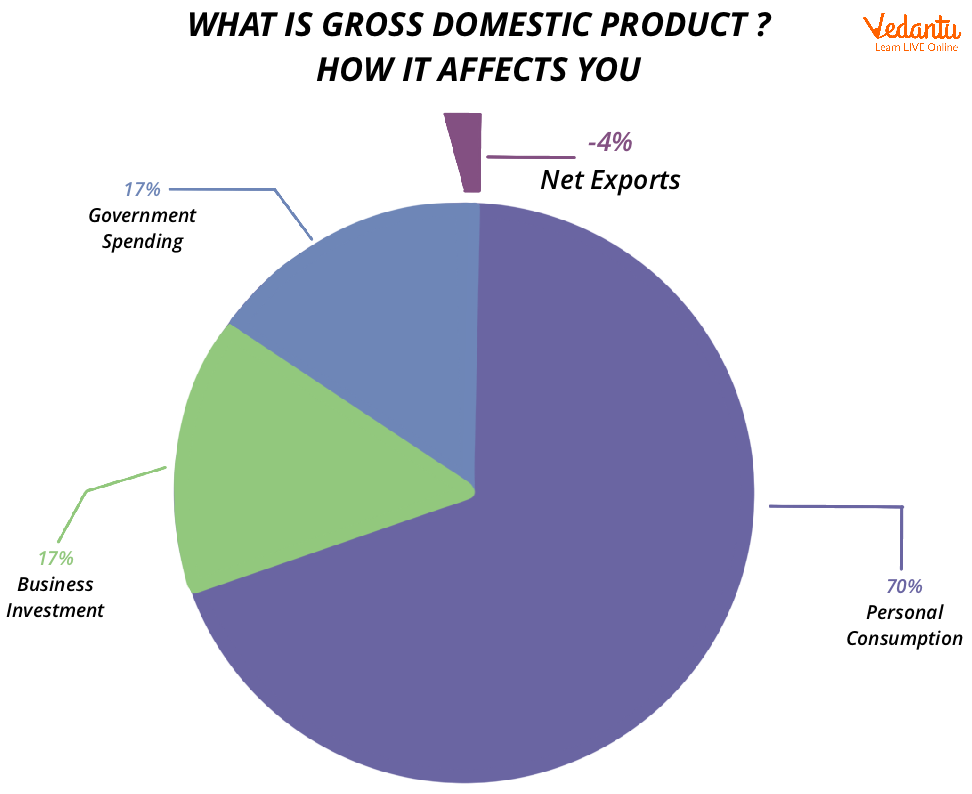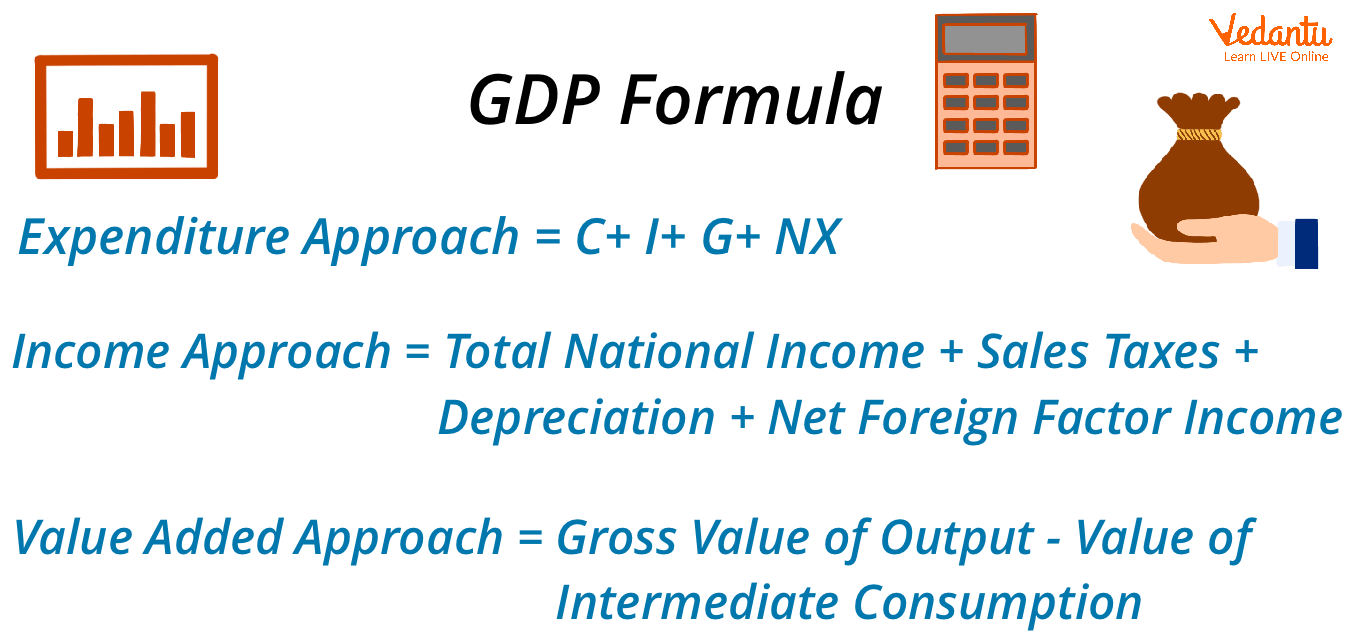




An Overview
Most economists measure GDP to define prosperity. GDP is the most widely used tool as it considers the value of all goods in an economy. Rising GDP means the economy is growing. On the other hand, falling GDP indicates a falling economy. This can also lead to recession.

Illustrating GDP
Economic Prosperity
Economic prosperity is the key element and is necessary for every nation to be competitive in the outside world. It is related to the country’s economic growth, security, and competitiveness.
Factors Affecting Economic Prosperity
1. Competition: It is a factor that plays an important role in economic growth and development. According to some surveys, economic competitiveness values international trade, efficient government, and well-functioning capital markets.
2. Education - Education is important for a country's long-term health and economic prosperity. Economic growth and prosperity depend upon the skills and values of the country’s workforce. The ability to create new technologies enhances the productivity of that country.
3. Freedom: The policymakers should take into consideration economic freedoms. Policies should be implemented properly to enhance the country's economic welfare.
4. Growth Rate: Growth rate is also important in economic prosperity. It is advised to boost economic growth to help the citizens to earn more wealth.
What is GDP (Gross Domestic Product)?
GDP measures the monetary value of a country's final goods and services within a specified period. It is also used for international comparisons and to indicate economic progress.

What is GDP?
Components of GDP
GDP = C + I + G (X-M)
C stands for the number of goods produced for consumption
I stand for the quantity of investment made
G stands for the number of goods produced by the government
X-M stands for Exports-Imports
1. Consumption: It represents all the goods and services purchased by individual consumers. This component is known as the best indicator of purchasing power in an economy. A higher C number for total GDP is a good sign.
2. Investment: It is also known as fixed investment. It is the number of capital goods added by a country. This component gives the idea about an economy's future GDP. A higher investment in capital goods is good for an economy.
3. Government Spending: This includes the government's spending in a specific year. Higher government spending is not good for an economy as it indicates poorly managed economies.
4. Net exports: The next component is net exports. Imports are subtracted from GDP to avoid the problem of double counting. It is important to segregate foreign trade from domestic trade. If a nation's GDP depends on foreign markets, then a slowdown in other countries will impact GDP.
GDP Indicators
Production approach: This approach is also known as the value-added approach. This approach consists of summing the gross value added of all industries. The first step is to determine its output and then subtract the goods and services used in production. The goods and services used are referred to as intermediate consumption. The difference between output and its intermediate consumption is gross value added (GVA). Adding indirect taxes and subtracting subsidies gives GDP.
Income approach: The income approach is based on that all the expenditures in an economy should be equal to the total income generated in the economy. It assumes four factors of production, and all the revenues must go to one of these sources. By adding together all the income sources, the economic activity's total production value can be ascertained. Adjustments regarding taxes and depreciation should be made.
Expenditure approach - This approach considers the sum of all final goods and services purchased in an economy. This includes all government spending, consumer spending, investment spending, and net exports.

GDP Indicators
Difference Between Prosperity and Wealth
Prosperity is derived from the word prosperous. It refers to the state of having an abundance of assets and other factors, including health, wealth, and happiness. Wealth is derived from the word wealthy. It refers to the state of being rich and having an abundance of assets and money.
Conclusion
So, GDP helps policymakers to judge whether the economy is prospering or not. It also helps to analyse various economic variables. That is why it is known as the best indicator of economic growth and development. It provides the overall picture of an economy. It is important to check GDP over time as it can also lead to inflation. According to some economists, GDP and national income accounts are considered great inventions of the twentieth century. But GDP isn’t accurate as it overlooks some important factors.
FAQs on What Makes a Country Prosperous?
1. What are the drawbacks of GDP?
It does not take into consideration the underground economy. The underground economy includes the risk of fraud, violence, and adulterated products. It is assumed that a country’s GDP is not its actual GDP unless it considers all these activities.
GDP measures the output of a particular country. It does not take into account profits earned by overseas companies.
GDP alone cannot measure a country’s development and economic well-being.
The GDP does not consider natural disasters. It will show the economic benefits provided to the people but will not show its impact on the environment.
2. How to increase economic prosperity in an economy?
Tax cuts and tax rebates: Consumers will have more money by reducing taxes and giving rebates. They are likely to invest their money in companies. This enables companies to improve technology, grow, and expand. All this will increase the overall productivity of an economy.
Deregulation: It is the relaxation of rules and regulations imposed by the government on various businesses. Due to the lack of deregulation, the policies restrict businesses from growing further. This all hinders GDP growth.
3. What are some reasons for a decrease in GDP?
Some of the reasons for the decrease in GDP are as follows:
A change in consumer spending will result in a decrease in GDP. Customers will spend according to their income, inflation, taxes, etc.
Another reason can be when interest rates rise. The disposable income of the consumer will decrease. This can also affect economic growth.
When the government reduces its spending on various projects essential for economic growth and development, it may affect the GDP.
Any changes in the availability of natural resources also result in a decrease in GDP.























